Where to Shoot Cherry Blossoms in Japan: A Practical Photo Guide
![]()
Japan goes into a frenzy each spring as millions of locals and tourists gather to catch a glimpse of the elusive cherry blossom. Simply known as sakura, the petals come and go like the wind, representing the ethereal beauty of life.
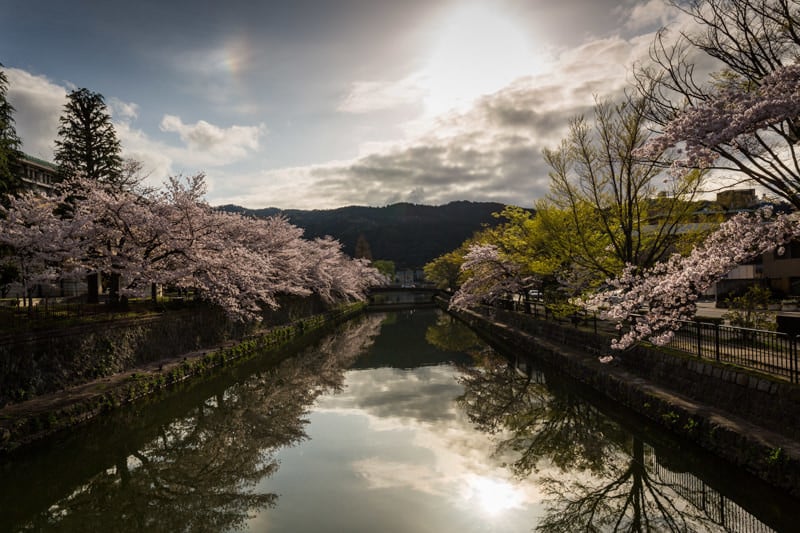
My name is Jimmy Chan, the photographer of Pixelicious from Montreal, Canada. Some of you might remember my in-depth guides for wedding photography lighting and posing, but I also take tremendous pleasure in shooting for myself once in a while. Photography is an endless pursuit, there’s always that next image or project to look forward to. With cherry blossom season upon us, this article is written for you, if:
- You are visiting Japan this spring!
- You dream in visiting Japan one day, hoping to witness sakura
- You simply enjoy taking pictures and uncovering hidden gems while traveling
Let’s be honest, even if you managed to book a trip to Japan during the busy season, your time there will probably be limited. Cooler temperatures can easily delay the bloom by a week or two, completely ruining the visitor’s dream in catching the sakura. This article provides the essential information you’ll need to increase your chances of seeing the cherry blossom at its peak, with a list of locations on where to find them and many other tips along the way.
Before You Go and What You Need to Know
The JNTO’s (Japan National Tourism Organization) website contains a wealth of information for tourists but I wish to draw your attention to their blooming forecast here. It will show a map of various regions across Japan with their first and full bloom dates. Remember to revisit often as the dates will change according to the weather pattern.

The Japan Rail Pass (commonly called “JR Pass”) is a blessing for tourists. It is designed to let you abuse the bullet trains to help save money. The JR Pass is so great that it is not offered to Japanese residents, you must show the “Temporary Visitor” stamp in your passport to get it. You can read about the eligibility and pricing here.
An ordinary adult 7-day JR Pass costs 29,110 YEN (as of 2018), equivalent to a round-trip ticket between Tokyo and Kyoto. The initial cost is recuperated simply by visiting Kyoto, chances are you will anyway. Nearly everything else is free, including bullet train rides for your other day trips and within Tokyo (Yamanote and Chuo-Sobu lines). Note that there are limitations to the JR Pass, make sure you review before purchase.
A tip on JR Pass: You will be able to obtain reserved seating tickets at any JR Ticket Office, but expect huge lineups due to the influx of tourists. Plan ahead: know which date, what time and which destination will you be needing the train that week. This way, the agent can help you book all your bullet train rides without having to wait in line repeatedly.
Photographers all have their favorite camera bag and gear list, so I won’t go into much detail as to what you need to bring. Japan is a very safe country, but you should take precaution regardless to safeguard your equipment. The average tourist will have multiple camera bodies so don’t be afraid to unleash your big guns. The number of people taking pictures during cherry blossom will blow your mind!
Landing in Tokyo: Do What You Have to Do, Then Go
If this is your first trip to Japan, most likely you will land in Tokyo and concentrate your sightseeing within the Tokyo-Kyoto-Osaka trifecta.
Prime spots to enjoy the cherry blossom in Tokyo include the Chidorigafuchi Park, Shinjuku Gyoen National Garden, and Meguro River.
However, Tokyo offers so much more and you will be tempted to eat at the Tsukiji fish market, immerse yourself into the otaku culture of Akihabara, shop at Ginza, or even visit the latest architectural masterpiece known as the Skytree.


It’s definitely worth spending some time exploring this mega-metropolis but the real fun starts once you board the Shinkansen (bullet train).
Kyoto: Experience Ancient Japan
Kyoto deserves its own article. Everything you have seen or heard is true, this ancient capital will mesmerize. In the heart of the Kansai region, Kyoto is strategically located to serve as a base for your upcoming day trips.
Due to its popularity, the sheer number of visitors can be overwhelming, only to reach extreme levels during cherry blossom. Here are some practical tips and recommended places to visit:
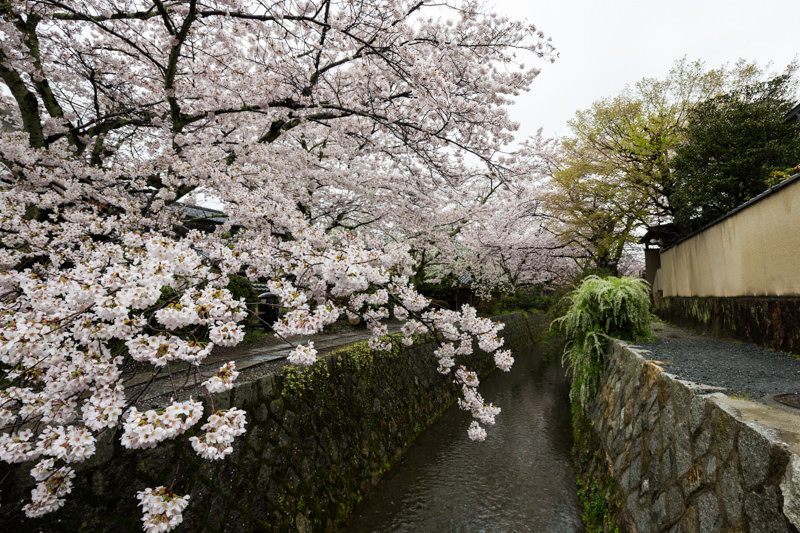


A tip on transportation: The guidebooks will tell you that Kyoto is a very walkable city. It also has an efficient bus network that will drop you off at every location imaginable. However, the lineups can be ridiculously long so consider spending an extra few dollars taking the cab, especially if traveling as a group. Your tired feet will thank you.

A tip on seeing a geisha: If you insist on watching a geisha perform (on a small budget), consider the Miyako Odori, a special show during the season featuring traditional dance and music. Advance booking a must and you can get them here.


A tip on behavior: Under no circumstances should you shake the cherry trees. I have seen this with my own eyes, where rude tourists hit the branches to make the petals deliberately fall on their kids to snap pictures. The locals become extremely angry and upset, so just don’t do it!
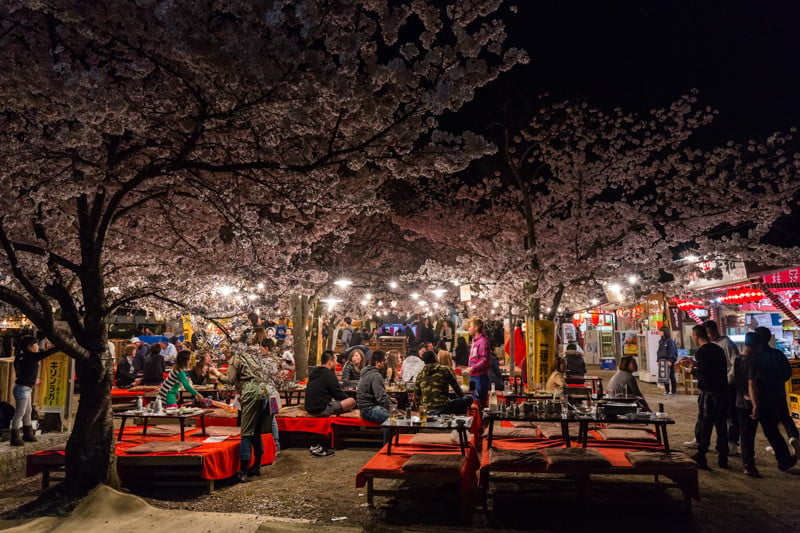

Osaka: Eat Till You Drop
An hour away from Kyoto, head South to reach Osaka. The city offers a very different experience but it is truly known for one thing: kuidaore!
It translates to “eat till you drop”.
Some say that you will arrive in Osaka with an empty stomach then leave with an empty wallet, feel free to indulge yourself in the culinary adventure!
However, by timing your visit carefully, you can visit the Osaka’s Mint Museum, featuring over 130+ varieties of cherry trees. The garden is open to the public during spring for one week only, be sure to check the dates here.

Nara: Deer Invasion
Home to over 1200 deer, these once considered sacred animals roam freely within the Nara Park. Feed them deer crackers should you wish to come up close and personal. Within walking distance, you will find some of the most revered places of worship, such as the Todai-ji temple and Kasuga Shrine.

Nagoya: Uncovering the Hidden Gem
From Kyoto, take the Eastbound train for an hour to reach Nagoya. This city is often overlooked by tourists but should you be willing to explore, you will come across one of the most spectacular displays of cherry blossoms.
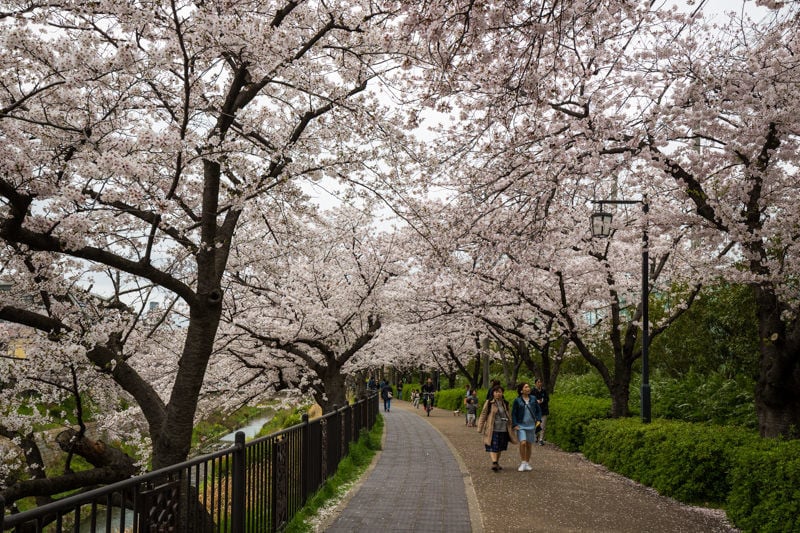
Finding the Yamazaki river can be a challenge, as it involves a metro ride from the Nagoya JR station, then another short walk to reach your destination. If in doubt, follow the locals!
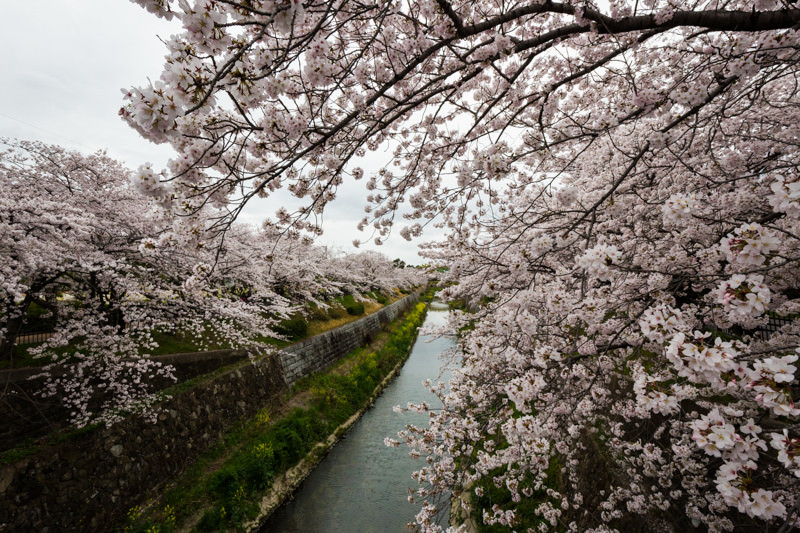
Himeji Castle: The White Heron Soars Once More
Now heading West from Kyoto, another one hour train ride will bring you to Himeji. The Himeji Castle is consistently ranked as one of the very best in Japan but it was closed for over 5 years due to extensive renovation.
The good news is that the castle is reopened to the public as of March 2015. The bad news is that you will have to fight your way through to get in. The castle is known to limit the number of daily visitors to keep things under control, in particular during sakura season.

My best advice is to show up before opening hours, your chances of getting tickets will remain high as long as you beat the large buses from organized tours.

Mount Yoshino: Ultimate Cherry Blossom Pilgrimage
Without large shopping malls or fancy restaurants, the average tourist isn’t much interested in Mount Yoshino. If you are researching this place, I can tell that you are already obsessed with sakura.
Reaching the mountain will require tremendous effort, follow the locals and hike your way to the Hanayagura lookout for a sweeping vista of cherry trees.
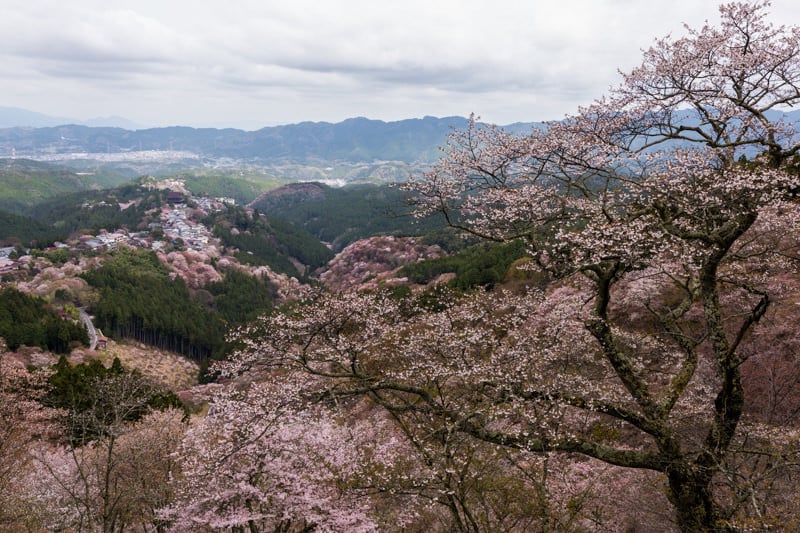
There are shuttle buses available but I strongly recommend going down on foot. The festive ambiance adds to the various shops and shrines you will encounter.
Kanazawa: Find Your Inner Zen
Of course, there are other amazing attractions in Japan besides the cherry blossom. The high number of photogenic locations makes this country a dream destination for any photographer.
Among the honorable mentions, Kanazawa offers all the benefits of Kyoto without the crowds. Now accessible via Shinkansen, this small town tops the list for those who wish for a more quiet getaway.
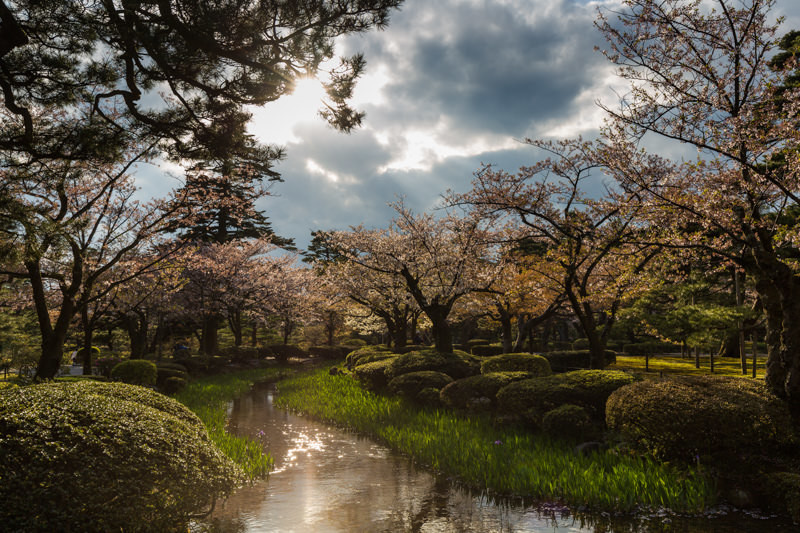
Arashiyama: Illusion of Space and Serenity
Arashiyama only requires 15 minutes by train from Kyoto station. Among the many places you can visit, the legendary Bamboo Grove easily tops the list. Two things you should know:
- The walk is relatively short within the Bamboo Grove
- Popular shall be an understatement, literally everyone wants to see this place
Combining the two statements above means that this place is consistently packed with tourists. Allowing cars (!) to drive through the narrow paths makes things worse.
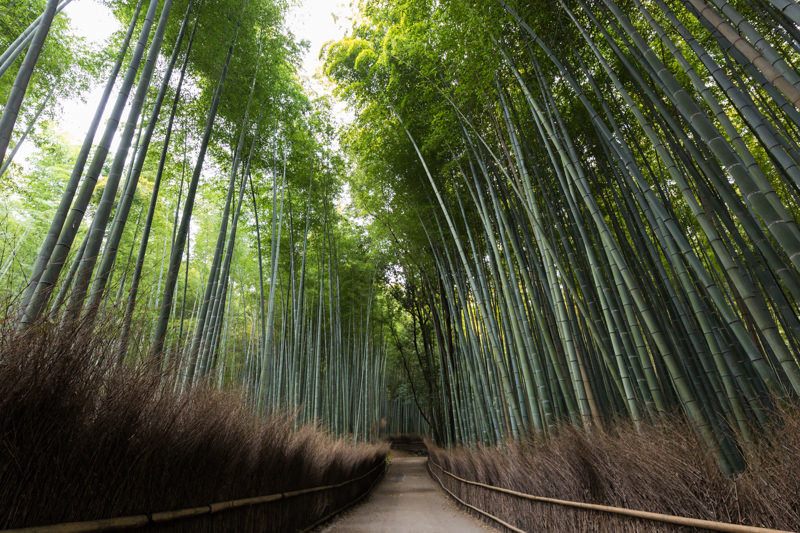
Matsumoto Castle: The Striking Black Crow
The imposing black exterior of the Matsumoto Castle has earned itself the nickname karasu-jo, the crow castle. Its signature red bridge across the moat has attracted visitors from all over the world, including yours truly.
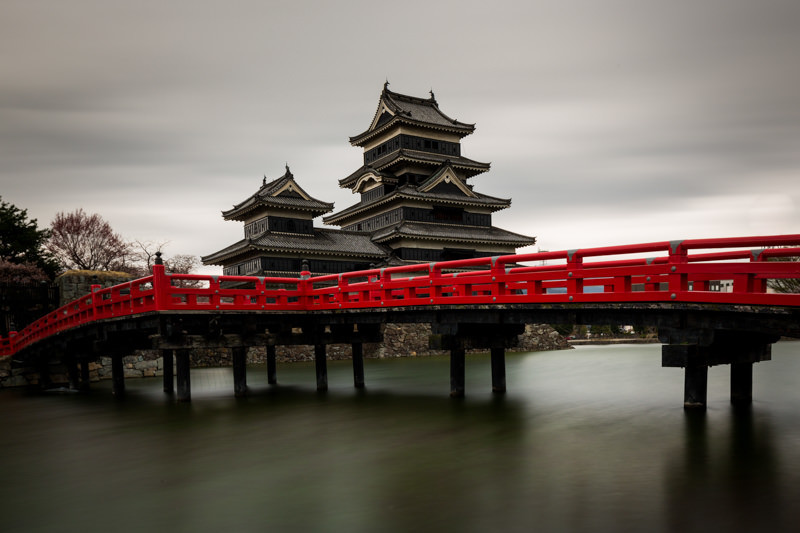
Each spring for approximately 10 days, a stunning exhibition called Corridor of the Light will take place at the Matsumoto Castle where the trees will illuminate at night so check your calendar in advance!
Miyajima: Island of the Gods
Perhaps the most iconic monument in Japan, the O-Torii (Great Torii) is located on Itsukushima island, but more commonly known as Miyajima (shrine island).
Many would suggest staying overnight on the island itself, or at the nearby city of Hiroshima but one can make it as a day trip should you really want to take advantage of your JR Pass. The Shinkansen will shorten the ride between Kyoto and Hiroshima down to 2 hours.

If you aren’t planning to stay overnight, then you have to take the boat back to Hiroshima before sunset.
During low tide, the water retreats and visitors can physically walk to the O-Torii, that itself is a unique experience but the muddy ground isn’t very photogenic. Wait for the high tide, then the water comes back, giving the illusion that the O-Torii is floating on the sea.
At Itsukushima, there are mainly 2 low tides and 2 high tides within 24 hours. What you want is to predetermine the dates where the high tides coincide with the sunrise or sunset, you can check the table here.
Again, unless you plan to stay overnight, you can forget about the sunrise and if you observe the chart carefully, you will notice that a sunset with high tide doesn’t come often. Come to Miyajima if you are looking for a challenge!
About the author: Jimmy Chan is a wedding photographer based in Montreal, Canada. The opinions expressed in this article are solely those of the author. You can find more of his work on his photography wedding business website, Pixelicious.